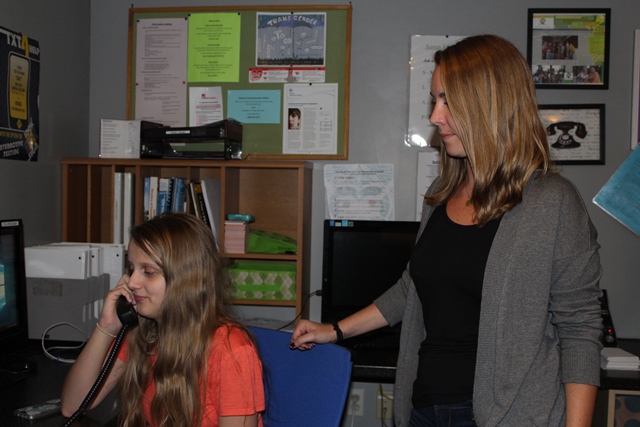As the school season hits, pressures grow for local youth. That is where the Valley’s Teen Lifeline comes in to be a source of hope and help for young people considering suicide.
Teen Lifeline first opened its doors in Phoenix in 1986. The program began after the 1985 network show, “Surviving,” aired. The show, starring Molly Ringwald, was based on two teens who died by suicide. It resulted in headlines popping up addressing the problem of teen suicide. At the time, Arizona was ranked second highest in the nation of teen suicides per year. As a result, the program started a year later and has focused the past 31 years on preventing teen suicide locally.
The three major components to the organization are: the Hotline, Life Skills Development, and Community Education and Prevention Services. Last year, the number of teens calling—or now texting—the hotline grew by 20 percent. One out of every three calls is from a young person considering suicide. The organization has two numbers, a local number as well as an 800 hotline, serving to reach teens in all corners of the state. Executive director Michelle Moorhead explains that on top of their newest school ID initiative, which adds the Teen Lifeline hotline information on the back of all student IDs, the nonprofit’s consistent presence on social media allows them to get their resources known to teens.
Most of the teen callers are in the age range of 15 to 17 (middle- and high school-aged) but, according to Nikki Kontz, clinical director and former teen volunteer, they have been known to get calls from students as young as 10 years old. The hotline is open 24/7, but teen counselors answer the hotline from 3 to 9 p.m. The organization has partnered with the Crisis Response Network to ensure that another person would answer any calls outside of that time frame.
One of the most valuable components to the organization is its network of teen volunteers. As a part of the Life Skill Development component, teens who wish to become peer counselors and have that important job of picking up the phone must go through a 72- to 100-hour training session. Headed by Kontz, the teens are trained how to become a problem solver. Throughout the training session, which lasts around six weeks, Kontz says, “we talk about some difficult things. These volunteers are reminded that there is not much difference between the hotline callers and themselves. They are all going through the same things.”
A master-level clinician supervises the hotline, though the calls are facilitated completely by the teens. “The last thing we want is for teen volunteers like Madeline [Kleist] to go home at the end of the night and say, ‘Man, this was the roughest call ever.’ We want her to feel that she did everything she could,” Moorhead says.
Kleist, 18, who was named Peer of the Year, says the organization is built to make you feel connected. “The hotline room is where the magic happens over the phone,” says Moorhead. “Teens become superheroes, leaving the caller feeling empowered to make changes in their lives. But in the hangout room, volunteers build magic through the empowering and supportive environment, creating friendships along the way. We are powered by teens, so you better expect that we have integrated that into everything we do.”
What’s coming up in the future for Teen Lifeline? This fall, the organization hosts Connections of Hope. The fundraising event will be held on Oct. 6 at Omni Scottsdale Resort & Spa at Montelucia. Guests can expect two teen bands to light up the night, 3 Nation and Don’t Tell Mom, as well as silent and live auctions. Rounding out the evening will be the presentation to Erik Olsson, CEO of Mobile Mini, who will receive the Alfred J. Molina Community Lifeline Award for his service and commitment to the community.
To Learn More
Teen Lifeline 602.248.TEEN, teenlifeline.org.

